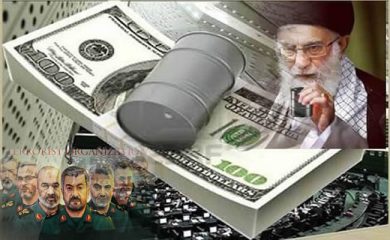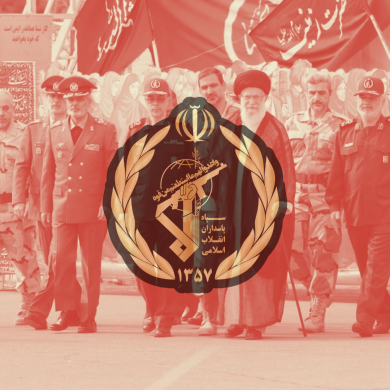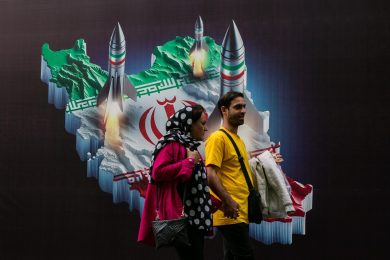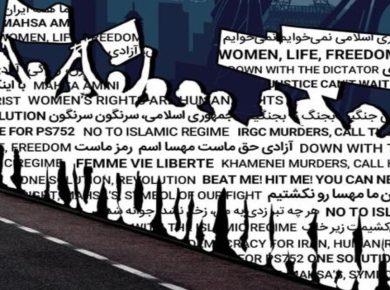The Islamic Revolutionary Guard Corps (IRGC) has evolved into a significant digital force, utilizing advanced technology to suppress dissent and spread propaganda. While traditionally a military and economic powerhouse, the IRGC has leveraged cyberspace to expand its influence, monitor activists, and counter narratives that challenge the Iranian regime. Its digital operations play a critical role in controlling public discourse within Iran and shaping perceptions abroad, making it a key instrument of repression and influence.
This report explores the IRGC’s digital tactics, their impact on dissent and propaganda, and the broader implications for Iran’s citizens and global security.
1. The IRGC’s Digital Operations Framework
A. Strategic Objectives
- Suppressing Domestic Dissent:
. The IRGC uses digital tools to monitor, censor, and intimidate activists, journalists, and opposition figures.
. Its goal is to stifle any organized efforts that could threaten the regime’s stability.
2. Shaping Global Narratives:
. The IRGC disseminates propaganda to portray the regime positively, deflect international criticism, and discredit opposition movements.
3. Enhancing Cyber Warfare Capabilities:
. Beyond suppression and propaganda, the IRGC employs cyberattacks to target foreign adversaries, disrupt critical infrastructure, and steal sensitive information.
B. Key Units and Infrastructure
. The IRGC’s Cyber Defense Command oversees its digital operations, coordinating cyberattacks and information campaigns.
. The Basij Cyber Council, a paramilitary wing of the IRGC, mobilizes thousands of volunteers for online propaganda and monitoring.
2. Suppressing Dissent: IRGC’s Digital Tactics
A. Mass Surveillance
. The IRGC monitors internet traffic, social media platforms, and encrypted messaging apps to track dissenters.
. Advanced surveillance technologies, often acquired through partnerships with foreign firms, enable real-time monitoring of activists and protesters.
B. Internet Blackouts
. During protests, the IRGC enforces internet shutdowns to disrupt communication among activists and prevent the dissemination of protest footage.
. For example, during the 2019 fuel protests, nationwide internet blackouts prevented citizens from sharing evidence of the regime’s violent crackdown.
C. Targeting Activists
- Phishing and Hacking Campaigns:
. The IRGC frequently launches phishing attacks to compromise the accounts of activists, journalists, and NGOs.
. Stolen information is often used to intimidate or arrest dissidents.
2. Digital Harassment:
. Activists and their families are targeted with threatening messages, disinformation, and doxing campaigns to intimidate and silence them.
3. Spyware Deployment:
. Reports indicate the IRGC uses spyware to monitor phones and computers, accessing sensitive information and tracking activists’ movements.
D. Censorship and Content Filtering
. The IRGC enforces strict censorship laws, blocking access to international news outlets, social media platforms, and websites critical of the regime.
. Content deemed “anti-Islamic” or “anti-government” is routinely removed, while regime-approved narratives dominate digital spaces.
3. Spreading Propaganda: IRGC’s Digital Influence Campaigns
A. Domestic Propaganda
- Control Over State Media:
. The IRGC controls key media outlets, including Tasnim News and Fars News, which disseminate state-approved narratives.
. Social media platforms amplify these narratives, presenting the regime as a protector of Islamic values and stability.
2. Disinformation Campaigns:
. The IRGC spreads false information to discredit protests and opposition groups, labeling them as foreign agents or terrorists.
. For example, during the Mahsa Amini protests, IRGC-affiliated accounts falsely claimed protesters were armed or funded by foreign governments.
B. Global Propaganda
- International Media Channels
. The IRGC operates outlets like Press TV, targeting foreign audiences to shape global perceptions of Iran.
. These channels promote anti-Western narratives and frame Iran as a victim of international aggression.
2. Social Media Manipulation:
. The IRGC operates troll farms and fake accounts to spread propaganda, hijack hashtags, and amplify pro-regime content.
. In 2020, Facebook and Twitter removed hundreds of IRGC-linked accounts involved in coordinated disinformation campaigns.
3. Targeting Diaspora Communities:
. Iranian diaspora groups are often targeted with disinformation to undermine their activism and loyalty to opposition movements.
4. Global Cyber Operations
A. Cyberattacks on Foreign Adversaries
. The IRGC has launched cyberattacks on critical infrastructure, including:
. Saudi Aramco (2012): The Shamoon virus erased data on 30,000 computers, disrupting operations.
. U.S. Financial Institutions (2011–2013): A series of DDoS attacks targeted major banks, crippling online services.
B. Espionage and Data Theft
. The IRGC engages in cyber espionage, targeting governments, corporations, and NGOs to steal sensitive data.
. These operations aim to gain strategic advantages and expose vulnerabilities in adversaries.
C. Cyber Proliferation
. The IRGC provides cyber capabilities to its proxies, such as Hezbollah and the Houthis, enabling them to carry out digital attacks.
5. Impact on Iranian Citizens
A. Loss of Privacy
. The IRGC’s surveillance undermines citizens’ privacy, making them vulnerable to harassment, arrests, and intimidation.
B. Restricted Freedom of Expression
. Censorship and internet blackouts limit Iranians’ ability to share information, express dissent, or access independent news.
C. Psychological Toll
. Constant surveillance and digital harassment create a climate of fear, discouraging activism and dissent.
6. International Responses to IRGC Digital Tactics
A. Sanctions
. The U.S. and EU have sanctioned IRGC-affiliated individuals and entities involved in cyber operations and propaganda.
. These measures aim to disrupt the IRGC’s access to technology and financial resources.
B. Cybersecurity Initiatives
. Countries targeted by IRGC cyberattacks have strengthened defenses, sharing intelligence and developing countermeasures to mitigate threats.
C. Social Media Regulation
. Platforms like Facebook, Twitter, and Instagram have removed IRGC-linked accounts and disinformation networks.
7. Recommendations for Countering IRGC Digital Tactics
A. Enhance Cybersecurity Collaboration
. Strengthen international partnerships to share intelligence on IRGC cyber operations and develop coordinated responses.
B. Support Digital Freedom Tools
. Provide Iranian activists with secure communication tools, VPNs, and encryption technologies to bypass censorship and protect privacy.
C. Expose Propaganda Networks
. Monitor and expose IRGC-linked disinformation campaigns, ensuring transparency and accountability.
D. Hold the IRGC Accountable
. Pursue international legal action against IRGC operatives involved in cyberattacks and human rights abuses.
Conclusion
The IRGC’s digital tactics represent a significant threat to freedom, privacy, and security, both in Iran and globally. Through surveillance, censorship, cyberattacks, and propaganda, the IRGC has created a digital infrastructure that serves as a tool of repression and influence. Addressing these challenges requires coordinated global efforts, including enhanced sanctions, cybersecurity measures, and support for digital freedom. By countering the IRGC’s digital operations, the international community can empower Iranian citizens and uphold the principles of free expression and transparency.
Join Our Newsletter!
Stay informed with the latest updates, news, and ways to take action in the fight for justice and global security. Sign up now to get updates delivered straight to your inbox!




